|
Do you feel completely overwhelmed at the prospect of potty training your kid? Especially potty training boys? I’m sure you heard that potty training boys is more difficult than potty training girls and how to potty train a boy or how to start potty training a boy might be a recurring question you’re asking yourself right now. Potty training is a rite of passage for parents. It is a frequent search in Google with over 63 million results. And I’m here to tell you that it doesn’t have to be so daunting as the internet or other people make it out to seem. Sure, at times it isn’t easy and can be, frankly, downright hard, but it doesn’t have to be impossible and such a terrible experience. Take it from me. I potty trained my son and lived to write about it. In this blog, you’ll get a 7 month guide on how I started potty training my son at 2 years old. You’ll get information on the best potty training supplies to buy, the process I used to get my son to go to the bathroom, mistakes I made, tips that worked, and information on pooping. Let’s dive right in. Lauren Barrett Writes is a participant in the Amazon Services LLC Associates Program, an affiliate advertising program. As an Amazon Associate, I earn from qualifying purchases. Read more about these links in my disclosure policy. Month 1
*If you don’t want to take this month by month, you can take it week by week*
Potty training for me started long before I even put my son on the potty. I wanted to go into it with a solid plan of action and research on my side. So month 1, I simply read a potty training book and mapped out my plan. For me, I follow The Mom Psychologist on Instagram and really resonate with her parenting style. When I learned that she had written a book, The First-Time Parent’s Guide to Potty Training, I jumped right on it and bought it. After reading it, I had a good idea of how potty training implementation would go, and I charted my steps for each month. For you, you might consider other books, courses, or articles. Either way, use Month 1 to have the knowledge of what you’re going to do. It’s good to do the research, so you can learn if your kids are physiologically and physically ready to use the bathroom. Month 2
|
|
|
|
|
|
Month 4
This month, we added in videos of potty training. We watched cartoons, songs, and real life clips on YouTube of potty training.
We continued to talk about potty training when it came up in everyday conversation. Like when I or my husband had to use the bathroom.
Once again, the potty remained in my son’s room, and he always had the invitation to use it if he liked.
We continued to talk about potty training when it came up in everyday conversation. Like when I or my husband had to use the bathroom.
Once again, the potty remained in my son’s room, and he always had the invitation to use it if he liked.
Month 5
We were getting closer to the actual days of potty training, but we still weren’t ready yet. During this month, we role-played and helped my son build his confidence with potty training.
I used his stuffed animals and acted like they had to use the bathroom. I acted out the steps of going to the potty by having them get the potty feeling, go to the bathroom, pull down their pants, and go! I used water and raisins to act as pee and poop.
We did lots of role-playing this month to prepare my son for his turn to use the bathroom.
I used his stuffed animals and acted like they had to use the bathroom. I acted out the steps of going to the potty by having them get the potty feeling, go to the bathroom, pull down their pants, and go! I used water and raisins to act as pee and poop.
We did lots of role-playing this month to prepare my son for his turn to use the bathroom.
Month 6
This month was the month that we prepared for the Big Day.
Some key points that we talked about this month:
Some key points that we talked about this month:
- Only you know when you have to use the bathroom.
- How to recognize the feeling of having to go.
- What the Big Day would be like and what we would do.
- Signs associated with potty training to help make the process easier.
Month 7
During this month you want to gather your supplies, which I will list below, and pick three days where you and your partner/spouse do not have a lot of obligations and one of you, if not both, can stay at home for most of the day.
Now, you can feel confident that your son is ready to learn to use the potty!
Now, you can feel confident that your son is ready to learn to use the potty!
Supplies
Before the Big 3 Days gather your supplies…
- Stand alone mini potty
- Seat reducer
- Flushable wipes
- Step stool
- Waterproof mat for the carpet
- Portable potty for car rides
- Easy to remove clothes
- Reward chart
- Reward treat
- Food coloring
- Rubber ducky
- Lots of liquids and foods high in fiber
|
|
|
|
|
The Big Three Days
The day has arrived and your child (and you) might be feeling a ton of emotions. That’s okay!
Validate their feelings and then get started.
Validate their feelings and then get started.
Day 1
On this day, your child goes completely naked from the waist down and you’re not going to leave the house.
Soooo….I suggest you set up some premade activities or be okay with some extra screen time because potty training can make for an endless day.
That’s also why it is nice to have a partner involved in this process today, so the two of you can take turns taking breaks because, trust me, you’re going to need them.
The rules of this day are simple:
Soooo….I suggest you set up some premade activities or be okay with some extra screen time because potty training can make for an endless day.
That’s also why it is nice to have a partner involved in this process today, so the two of you can take turns taking breaks because, trust me, you’re going to need them.
The rules of this day are simple:
- Instruct your child that when they get the “potty feeling” to go on the potty. Make sure the potty is easily accessible.
- When your son goes on the potty, give him a treat right away.
- If they start going on the floor, try to catch them midway and carry them over to the potty. If they finish their peering on the potty, give them a treat right away.
- If they go on the floor, do not yell or shame. Tell them that it’s okay but remind them that the peeing and pooping are for the potty.
- Load them up with liquids and fruits and fiber to give them plenty of opportunities to use the potty.
- Use the gossiping strategy at the end of the day.
- *Extra* Give them a certificate for completing Day 1.
Day 2
This day is exactly the same as Day 1, but you’ll do a 15-20 minute excursion outside. Maybe to the playground or to take a walk around the block.
Day 3
Day 3 is the same as Day 2, but you’re going to add in a longer outside excursion AND you are going to put underwear and loose fitting pants on your boy.
Pro Tips for Potty Training
Here are my best tips for potty training boys (and girls):
1. Put food coloring in the potty
Show your son that you’re putting food coloring in the potty and use this script…
“Look, I put a red drop in the potty. Turn your pee red! Look, your pee is red! What color do you want to make your pee next time?”
2. The Diaper Steps for Peeing and Pooping
If you have kids who scream for their diapers (mine did for pooping), try the diaper steps.
Do each step for about 3-7 days before removing onto the next step. Always, talk to them about the next step before doing it.
“Ohh! Tomorrow, we’re going to cut a hole in your diaper. You’ll pee through the hole in your diaper. So fun! How do you feel about that?”
3. The Rubber Ducky Trick
Okay, this is kind of gross, but it worked. We would put a plastic rubber ducky in the potty and tell my son to make him float in the “water.”
Giving kids a goal that they feel proud of makes them feel confident to continue.
4. Reward Charts
I’ll be honest, reward charts can be tiring because you have to be super consistent, but they can work.
I actually used them later on in the potty training process. My son had mastered the art of going to the potty, but he was still having accidents here and there and wasn’t pooping consistently on the potty.
So, what I did was write down the steps I wanted him to accomplish:
For each one he did, he got a star and so many stars equaled a prize/treat/reward that we determined together.
You can cater this to your experience however you want.
Maybe for you, your son gets a star on his chart (or a sticker or a checkmark on his hand) every time he just pees on the potty. So many stars at the end of the day equals a prize.
Increase the criteria as your child improves → He has to get more stars per day or a prize comes every other day instead of everyday.
Finally, gradually reduce how often you give a reward until you aren’t handing them out anymore.
5. On and Off
This was kind of a mistake we made. I highly suggest the potty be an on and off thing instead of a lingering on kind of thing.
I wouldn’t place your child on the potty and instruct him to sit there until he goes. We really want our kids to recognize when they have to go and then go and be done with it.
That’s why I recommend no screens or books or games or sitting there holding their hands.
Forcing them to go or sit on the potty for too long will create a negative association with the potty and generally lead to more resistance.
6. No more diapers or pull-ups
Once your kids are developmentally ready to use the potty, do not go back to diapers, pull-ups or anything that looks or feels like a diaper except for nighttime and naps.
Kids need consistency and going back to diapers or pull-ups will be confusing.
Stick to underwear even if the accidents are annoying in the short term. It will be better in the long run.
Here are some thicker underwear that cause less of a mess.
. 7. Character Underwear
Buy your child his favorite character underwear - Paw Patrol, Batman, Mickey Mouse - and instruct him not to get Chase (insert character here) wet. “Help keep them dry.”
1. Put food coloring in the potty
Show your son that you’re putting food coloring in the potty and use this script…
“Look, I put a red drop in the potty. Turn your pee red! Look, your pee is red! What color do you want to make your pee next time?”
2. The Diaper Steps for Peeing and Pooping
If you have kids who scream for their diapers (mine did for pooping), try the diaper steps.
- Step 1: They can wear their diapers, but they have to be in the bathroom.
- Step 2: They can wear their diapers, but they have to sit on the potty.
- Step 3: They can wear their diapers, but there is a hole in the diaper.
- Step 4: No diaper!
Do each step for about 3-7 days before removing onto the next step. Always, talk to them about the next step before doing it.
“Ohh! Tomorrow, we’re going to cut a hole in your diaper. You’ll pee through the hole in your diaper. So fun! How do you feel about that?”
3. The Rubber Ducky Trick
Okay, this is kind of gross, but it worked. We would put a plastic rubber ducky in the potty and tell my son to make him float in the “water.”
Giving kids a goal that they feel proud of makes them feel confident to continue.
4. Reward Charts
I’ll be honest, reward charts can be tiring because you have to be super consistent, but they can work.
I actually used them later on in the potty training process. My son had mastered the art of going to the potty, but he was still having accidents here and there and wasn’t pooping consistently on the potty.
So, what I did was write down the steps I wanted him to accomplish:
- Pull down your pants on his own.
- Pee.
- Pull up pants on his own.
- Flush.
- Wash Hands.
- Poop in the potty.
For each one he did, he got a star and so many stars equaled a prize/treat/reward that we determined together.
You can cater this to your experience however you want.
Maybe for you, your son gets a star on his chart (or a sticker or a checkmark on his hand) every time he just pees on the potty. So many stars at the end of the day equals a prize.
Increase the criteria as your child improves → He has to get more stars per day or a prize comes every other day instead of everyday.
Finally, gradually reduce how often you give a reward until you aren’t handing them out anymore.
5. On and Off
This was kind of a mistake we made. I highly suggest the potty be an on and off thing instead of a lingering on kind of thing.
I wouldn’t place your child on the potty and instruct him to sit there until he goes. We really want our kids to recognize when they have to go and then go and be done with it.
That’s why I recommend no screens or books or games or sitting there holding their hands.
Forcing them to go or sit on the potty for too long will create a negative association with the potty and generally lead to more resistance.
6. No more diapers or pull-ups
Once your kids are developmentally ready to use the potty, do not go back to diapers, pull-ups or anything that looks or feels like a diaper except for nighttime and naps.
Kids need consistency and going back to diapers or pull-ups will be confusing.
Stick to underwear even if the accidents are annoying in the short term. It will be better in the long run.
Here are some thicker underwear that cause less of a mess.
. 7. Character Underwear
Buy your child his favorite character underwear - Paw Patrol, Batman, Mickey Mouse - and instruct him not to get Chase (insert character here) wet. “Help keep them dry.”
Mistakes I Made With Potty Training
Everyone makes mistakes. Here are mine…
My son was very scared to poop. He would hold it so badly that he became very constipated. At first, we tried to force him to go which was pretty traumatizing for him and made his constipation worse. We wouldn’t do this again. Instead we would do the Diaper Steps in the first place, which ended up working for us later on.
The timing was slightly off, especially with getting him to poop. I started the Big 3 Days in August since I am a teacher and off for the summer.
However, shortly after those Big 3 Days, I went back to work, we sold our house, moved into our son’s grandparents’ house, and then 2 months later moved into our new house.
The timing will never be perfect, but he had to undergo a lot of transitions that can make potty training difficult.
Try to avoid potty training when it closely coincides with a big transition like a new baby or moving.
My son was very scared to poop. He would hold it so badly that he became very constipated. At first, we tried to force him to go which was pretty traumatizing for him and made his constipation worse. We wouldn’t do this again. Instead we would do the Diaper Steps in the first place, which ended up working for us later on.
The timing was slightly off, especially with getting him to poop. I started the Big 3 Days in August since I am a teacher and off for the summer.
However, shortly after those Big 3 Days, I went back to work, we sold our house, moved into our son’s grandparents’ house, and then 2 months later moved into our new house.
The timing will never be perfect, but he had to undergo a lot of transitions that can make potty training difficult.
Try to avoid potty training when it closely coincides with a big transition like a new baby or moving.
Success!
Hopefully with this guide and tips, you’re successfully on your way to potty training. Remember your son will continue to have accidents. They won’t be perfect.
They might get caught up in playing and forget to go or go through some regressions.
Be gentle with them.
If you are still having extreme problems, check in with your doctor to see if they are developmentally ready.
But other than that, praise them and yourself for all your hard efforts.
And check out my course Now What? for strategies for some of life’s other difficult parenting moments.
They might get caught up in playing and forget to go or go through some regressions.
Be gentle with them.
If you are still having extreme problems, check in with your doctor to see if they are developmentally ready.
But other than that, praise them and yourself for all your hard efforts.
And check out my course Now What? for strategies for some of life’s other difficult parenting moments.
|
Lauren Barrett is a multi-passionate mom working to help all parents become their best selves and build positive relationships with their kids through mindful parenting. She has a degree in deaf education and a Master’s in Reading Education. She is a high school teacher of the Deaf and hard-of-hearing by day, a cross country coach by the afternoon, a writer/author by her son's nap times, and a full time mom to an amazing toddler. Lauren is a 2x author of the Add One-A-Day 30 Day Challenge and children's book, Henry's Hiccups, a blogger at Lauren Barrett Writes, and has been published on sites like A Fine Parent, Pregnant Chicken, Pop Sugar, Her View From Home, and Scary Mommy. She loves her faith, running, visiting MLB stadiums with her husband, chocolate, scrapbooking, pretending she would actually do well on the Amazing Race, re-watching The Office, listening to Bobby Bones, and helping out all moms. She lives in North Carolina with her husband, James, and son, Henry. Follow her on Instagram and get her free parenting checklists.
|
0 Comments
Leave a Reply.
|
|
|
|
Categories
All
Add One A Day 30 Day Challenge
Add One-A-Day 30 Day Challenge
Baby
Blogging
Life
Marriage
Mom
Parenting
Positive Parenting Discipline
Pregnancy
Raleigh
Running
Social Justice
Teacher
Toddler Eating
Travel
Vocabulary
Wedding
Writing
Proudly powered by Weebly


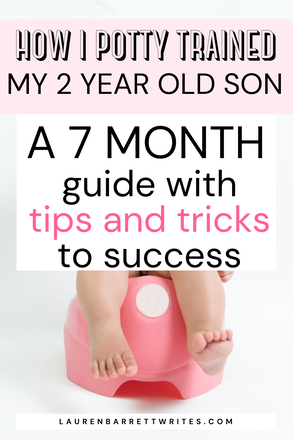
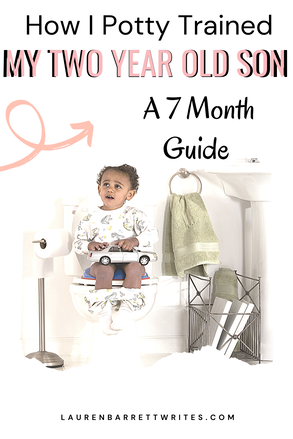
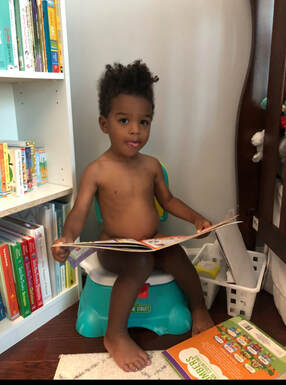
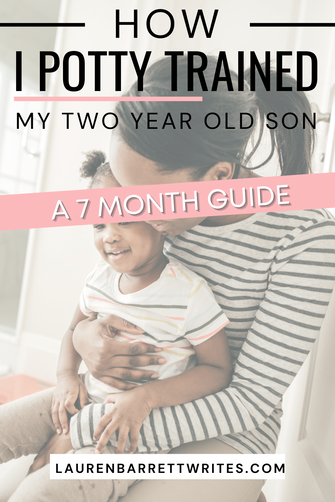
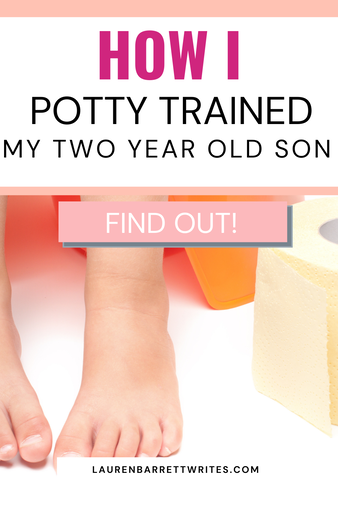
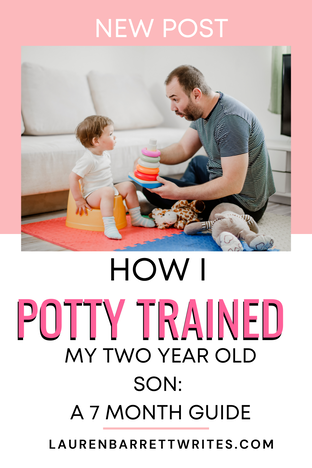

 RSS Feed
RSS Feed